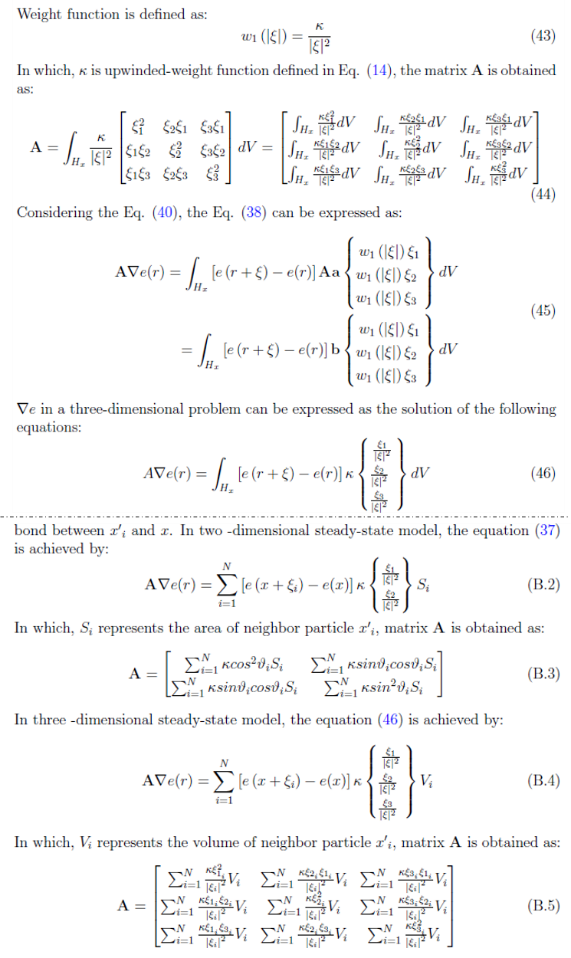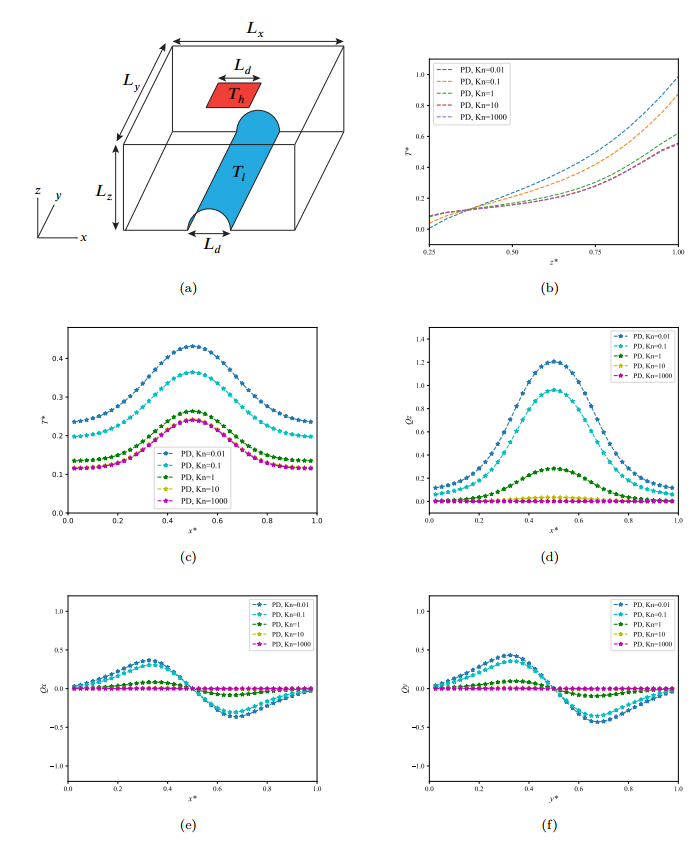Researcher in CNIC has made progress in the computational research of phonon Boltzmann transport equation
Phonon Boltzmann transport equation can effectively describe the phonon thermal transport process in micro/nano materials. The traditional deterministic phonon Boltzmann transport equation numerical simulation method has complex processes and low computational efficiency when dealing with complex geometric structures and discontinuous regions. Recently, High Performance Computing Technology and Application Department developed a Peridynamic method for solving phonon Boltzmann transport equations, and has provided mathematical proof and experimental verification of the convergence of this method.
With the support of the "ORISE" supercomputing system and the "Era" supercomputing system, the method conducted computational simulations from one-dimensional to three-dimensional models, verifying that this method can accurately describe the steady-state phonon thermal transport process in various dimensions. This work provides a new approach for simulating multi-scale phonon thermal transport and a new numerical simulation method for the study of micro nano thermal transport theory. The related research results have been published in Computer Physics Communications (CAS JCR: Q2). The first author of the paper is Liu Weier, a doctoral student from the High Performance Computing Technology and Application Department, and the supervising teachers are Associate professor-level researcher Feng Yangde and professor-level researcher Niu Beifang.
This work was supported by the National Key Research and Development Program of China, "Research and Construction of Application Platforms and Service Systems in the Field of National High Performance Computing Environment" project (No. 2020YFB0204802).


Reference:
Weier Liu, Yangde Feng*, Ruilin Li, Chenhan Bai, Beifang Niu*. “Peridynamic modeling for multiscale heat transport of phonon Boltzmann transport equation”. Computer Physics Communications, 29 February 2024, 109157.
Paper link:https://www.sciencedirect.com/science/article/abs/pii/S0010465524000808
